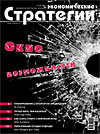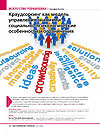Knowledge Management in the Context of Spiral Dynamics
DOI: 10.33917/es-6.198.2024.104-111
Nowadays, the «knowledge management» concept is often used, since today an employee is, first of all, an intellectual worker. However, an allowance is rarely made for the organizational environment in which managers and executives manage
knowledge and due to which this management can be modified. The purpose of the present work is to explain the «knowledge management» term from the point of view of the spiral dynamics concept. The results of the analysis have revealed that interpretation of the «knowledge management» concept becomes more complicated as the level of spiral dynamics increases, and it also begins to acquire features of its previous levels. These assumptions are intended to help managers and executives adapt their skills in intellectual worker management based on the level of spiral dynamics at which their organization is.
References:
1. Sukharev O.S. Tekhnologicheskiy suverenitet Rossii: formirovanie na baze razvitiya sektora “ekonomika znaniy” [Technological Sovereignty of Russia: Formation based on the Development of the “Knowledge Economy” Sector]. Vestnik Instituta ekonomiki Rossiyskoy akademii nauk, 2024, no 1, pp. 47–64, DOI: https://doi.org/DOI: 10.52180/2073-6487_2024_1_47_64
2. Gurtskoy L.D., Zudin A.B., Vvedenskiy A.I. Upravlenie zdorov’em sotrudnikov v usloviyakh tsifrovizatsii [Employee Health Management in the Context of Digitalization]. Problemy sotsial’noy gigieny, zdravookhraneniya i istorii meditsiny, 2022, vol. 30, no 6, pp. 1313–1317, DOI: 10.32687/0869-866X-2022-30-6-1313-1317
3. Mintsberg G. 2004. Struktura v kulake: sozdanie effektivnoy organizatsii [Structure in a Fist: Creating an Effective Organization]. Per. s angl. pod red. Yu.N. Kapturevskogo. Saint Petersburg, Piter, 2004, 512 p.
4. SDi Foundation [Website]. Spiral Dynamics Foundation, 2024, available at: https://sdifoundation.com
5. Bek D., Larsen T., Solonin S., Vildzhoen R. Spiral’naya dinamika na praktike. Model’ razvitiya lichnosti, organizatsii i chelovechestva [Spiral Dynamics in Practice: A Model of Personal, Organizational and Human Development]. Moscow, Al’pina Pablisher, 2018.
6. Butters Albion M. A brief history of Spiral Dynamics. Approaching Religion, vol. 5, no 2, pp. 67–78.
7. Graves C.W. With comments by E.C. World Future Society. Human Nature Prepares for a Momentous Leap. The Futurist, 1974, pp. 72–87.
8. Bek D., Kovan K. Spiral’naya dinamika. Upravlyaya tsennostyami, liderstvom i izmeneniya v XXI veke [Spiral Dynamics: Managing Values, Leadership, and Change in the 21st Century]. BestBusinessBooks. Open World Publishing House, 2010, 424 p.
9. Lalu F. Otkryvaya organizatsii budushchego [Discovering the Organizations of the Future]. Moscow, Mann, Ivanov i Ferber, 2016.
10. Kleyner G.B. Spiral’naya dinamika, sistemnye tsikly i novye organizatsionnye modeli: perlamutrovye predpriyatiya [Spiral Dynamics, Systemic Cycles and New Organizational Models: Pearlescent Enterprises]. Rossiyskiy zhurnal menedzhmenta, 2020, vol. 18, no 4, pp. 471–496, available at: https://doi.org/10.21638/spbu18.2020.401









